Dropshipping Fulfillment: Supply Chain & Fulfillment Explained
Do you know what dropshipping order fulfillment is and how it works? Probably not, particularly if you are new to dropshipping and e-commerce.
Although dropshipping order fulfillment may sound simple, it is actually a complex process.
So, in this guide, we will try to explain how the entire process works and help you derive any useful insights or actionable information from it.


Table of Contents
- What is Dropshipping Order Fulfillment?
- Who Are The Major Players Involved In The Dropshipping Supply Chain?
- How Does The Dropshipping Fulfillment Process Work?
- The No. 1 Tool for all dropshippers – now with AI
- How To Improve The Dropshipping Order Fulfillment Process Of Your E-Commerce Business?
- Top 5 Dropshipping Fulfillment Platforms
- Real-Life Examples Of Dropshipping Stores & Their Dropshipping Fulfillment Systems
- Dropshipping Fulfillment FAQs
- 1. How do dropshippers handle returns and exchanges, especially when the supplier is involved in the fulfillment process?
- 2. What are the specific challenges dropshippers face with international shipping?
- 3. How can dropshippers effectively communicate with and manage relationships with multiple suppliers, especially when aiming to offer a wide range of products?
- Dropshipping Fulfillment – Complete Guide
What is Dropshipping Order Fulfillment?
First and foremost, dropshipping is an order fulfillment business model where an online store does not keep the products it sells in stock. You can learn how this business model works here.
But how do you get products to sell online when you do not own them? This is where dropshipping order fulfillment comes into play.
So, what exactly is dropshipping order fulfillment? Order fulfillment is a process involved in the dropshipping business model. It encompasses warehousing, order processing, packing, and shipping products to customers.
In simpler terms, order fulfillment includes everything from receiving an order to ensuring that order is delivered to the customer.
There might still be many aspects of the dropshipping order fulfillment process that are unclear to you. Just be patient – I will explain everything step by step!
For instance, once an order is placed on your online store, the process involves notifying the supplier, who then picks, packs, and ships the product directly to your customer.
👉 Learn How to Cancel a Dropshipping Order? [A Step-By-Step Guide].
👉 Learn about What DAP Means? – Understand Delivery At Place In Shipping
Who Are The Major Players Involved In The Dropshipping Supply Chain?
The term “dropshipping supply chain” describes the path a product takes to go from manufacturing and eventually into the customer’s hands.
So, as a dropshipping store owner, you must understand who is involved in the dropshipping supply chain.
1. Manufacturers
It is a fact that manufacturers make their own products. As a rule of thumb, they do not sell their products directly to the public. Rather, they sell in bulk to wholesalers, retailers, or dropshipping suppliers.
Buying directly from manufacturers is unquestionably the least expensive way to buy products for resale. However, the majority of manufacturers have minimum order quantity requirements you must meet.
Also, you must keep products in stock and ship them to your customers. This is why it is much easier to purchase your products directly from wholesalers or dropshipping suppliers.
For example, Printful offers a wide range of products such as apparel, accessories, and home decor items that can be customized with designs. 👇
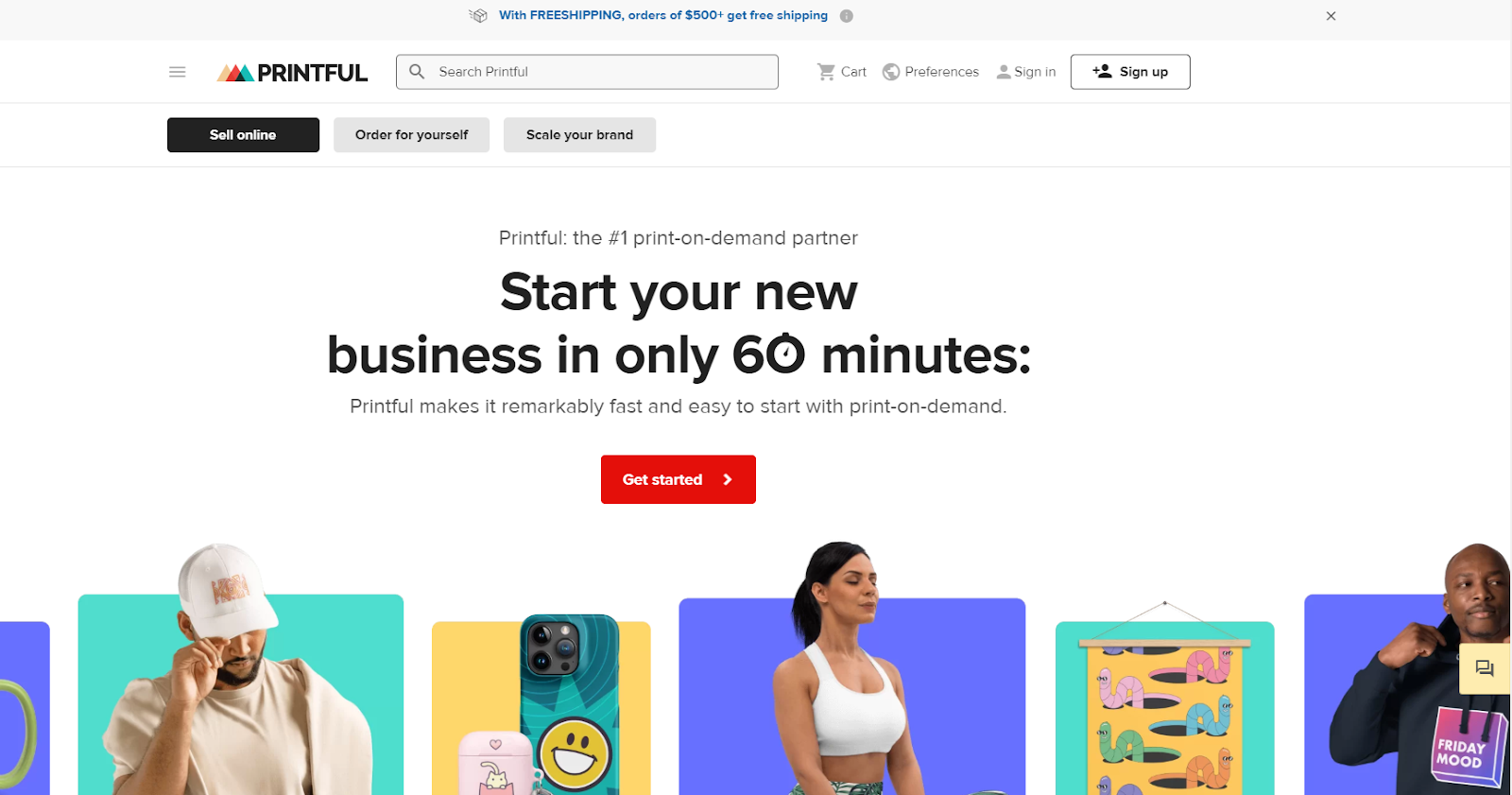
Plus, the company handles everything from printing to shipping directly to customers.
Also, you can consider checking out Printify, Gooten, Furniture Pipeline, etc.
2. Wholesalers
Wholesalers purchase in bulk from manufacturers. Then, they usually sell their products to other businesses like retailers and dropshipping suppliers.
They do not sell directly to end consumers. And they sell products in larger quantities than an individual consumer would normally buy.
That’s to say, the main role of wholesalers is to effectively connect the right stock to retailers and dropshipping suppliers, and finally, end consumers.
Bear in mind that some wholesalers are also dropshipping suppliers themselves because they offer dropshipping services.
Let’s take BrandsGateway, for example. The company operates both as a wholesaler and dropshipping supplier of branded and luxury apparel. 👇
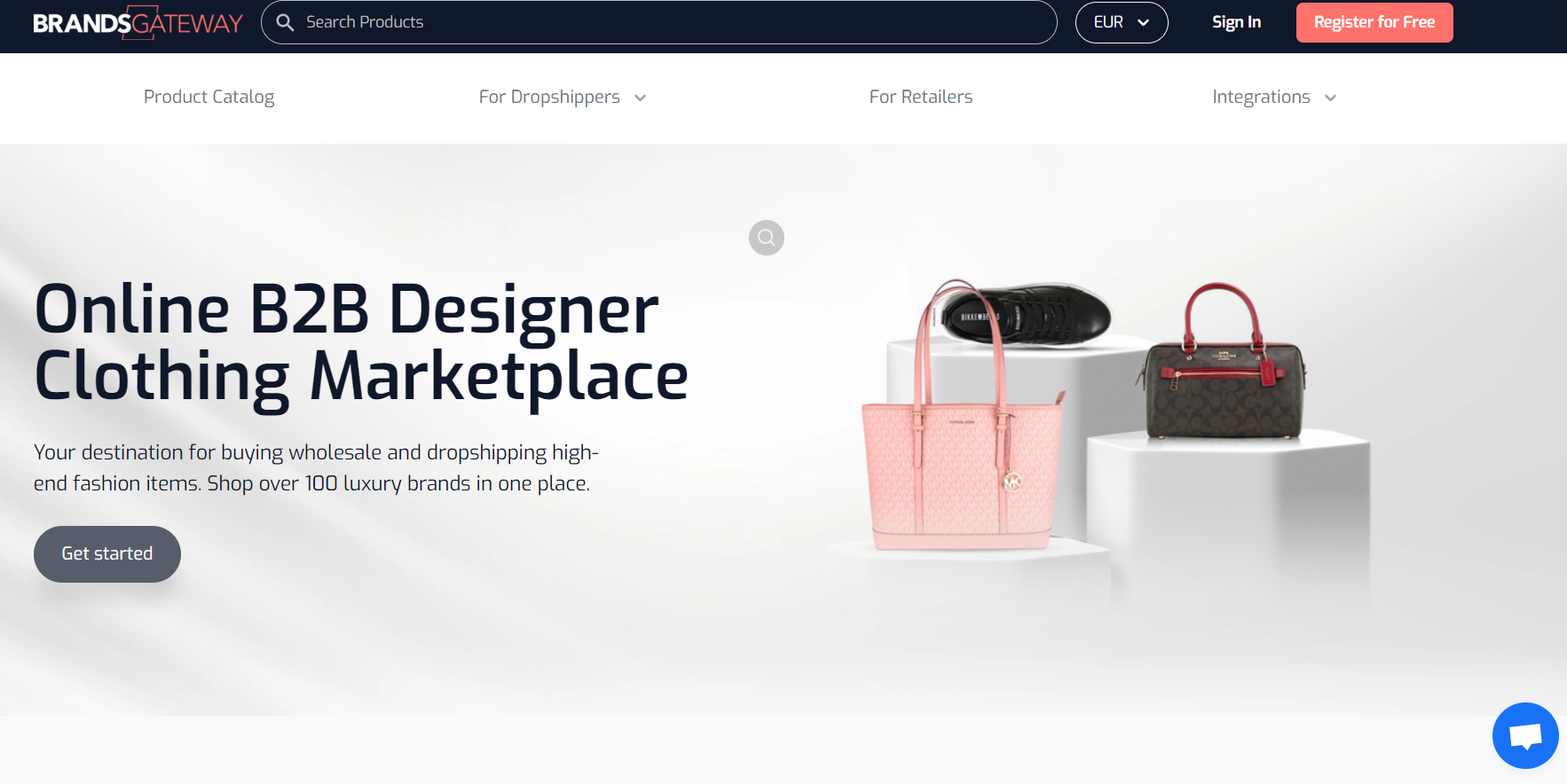
Also, if you are looking for general merchandise, Alibaba is a global wholesale marketplace that connects buyers with suppliers around the world, offering a wide range of products in bulk quantities.

Also, here are some other dropshipping fulfillment wholesalers:
➡Apparel and Fashion
- FashionTIY: Specializes in fashion and accessories, providing a wide range of products including clothing, jewelry, and accessories at wholesale prices.
- Tasha Apparel: A wholesale clothing supplier offering trendy and fashionable clothing items. Thus, they cater to retailers of all sizes and provide a variety of styles at competitive prices.
➡Electronics
- MegaGoods: A consumer electronics distributor that offers a variety of electronic goods, including gaming consoles, kitchen appliances, and personal electronics.
- Chinavasion: Specializes in electronic goods and gadgets. They offer a wide selection of products, including the latest in technology trends, at wholesale prices.
➡Home and Lifestyle
- Kole Imports & Closeouts: Offers a broad range of products in categories such as home decor, kitchenware, and outdoor accessories. They are known for their competitive pricing and variety of closeout deals.
- Eastwind Wholesale Gift Distributors: Specializes in gifts and home decor items, providing a wide array of products for retailers looking to stock up on unique and appealing items.
➡Health and Beauty
- FragranceNet.com: While primarily known for retail, they also offer wholesale options for perfumes, colognes, and beauty products, catering to businesses looking to buy in bulk.
- GreenDropShip: Specializes in natural and organic products across various categories, including beauty, health, and grocery items. They offer a wide selection of products for businesses focusing on eco-friendly and health-conscious consumers.
➡Jewelry
- Ruby Imports: A jewelry wholesaler that offers a wide selection of fashion jewelry and accessories, including necklaces, bracelets, earrings, and more.
- JewelryMax: Specializes in wholesale fashion jewelry and accessories, providing trendy and stylish items for boutiques and online retailers.
3. Dropshipping Suppliers
Dropshipping suppliers buy from wholesalers or manufacturers and sell to dropshippers.
Then, dropshippers resell products to end consumers. (If you own an online business selling products to end consumers without holding any inventory, then you are a dropshipper.)
Dropshipping suppliers are responsible for the storing, order processing, and shipping of products. However, they do not deal directly with end consumers.
As you can see, you, as a dropshipper, are essentially a silent partner in the supply chain and have no control over it.
In a nutshell, you do not hold inventory or do the packing or shipping yourself.
The dropshipping supplier/wholesaler/manufacturer does that on your behalf. But you are responsible for the efficient running of your dropshipping store, including marketing, selling, and making your customers happy.
👉 Check out the 24 Best Dropshipping Suppliers In The USA [General + Niche].
How Does The Dropshipping Fulfillment Process Work?
Here, we will cover everything from how a customer places an order with your dropshipping store to how they receive their package.
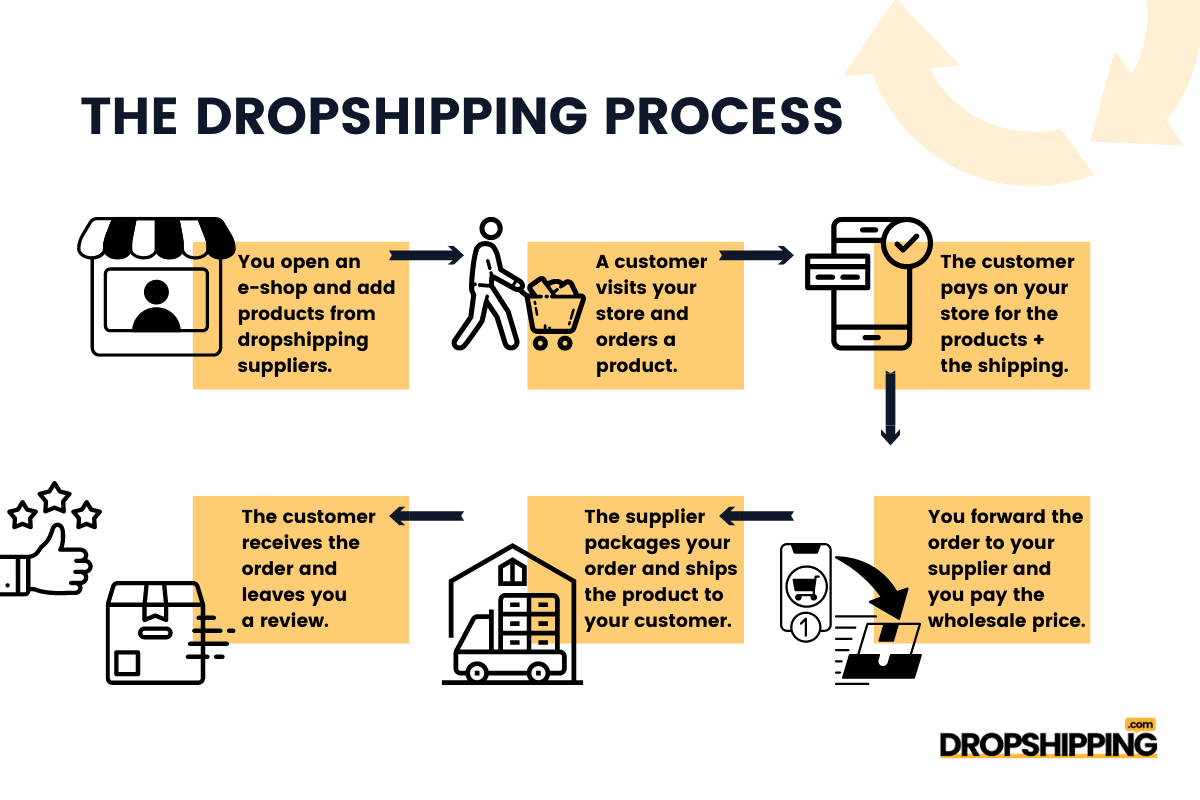
The process of dropshipping order fulfillment is as follows:
1. A customer places an order with your dropshipping store
The dropshipping fulfillment process begins when a customer places an order with your dropshipping store.
Let’s suppose that someone visits your dropshipping website and finds something that they like and need. That person decides to buy that product and places an order with your dropshipping store. They enter their shipping details.
The order is accepted and confirmed. Then, your customer receives an e-mail with their order details. Your customer’s payment is captured during the checkout process and is automatically deposited into your bank account.
2. You place the order with your supplier
The next step in the dropshipping fulfillment process is to forward the e-mail order confirmation to your supplier, specifically to their sales representative.
The sales representative has your dropshipping business credit card on file and bills it for the wholesale price of the product, including any shipping or processing fees.
One more thing that we want to mention here is that although e-mail is the most popular way to place an order with your supplier, you may also want to use automatic XML order uploading or place an order manually.
3. Your supplier picks, packs, and ships the order
When your supplier sales representative receives the e-mail order confirmation, they assign the order to their picking team.
The picking team gets a packing slip, which is a document or a list of items that should be included in the package, to ensure that they pick the right items.
Of course, the picking team knows exactly where all the items are located in their warehouse and finds the right item. Next, the team puts the order in a shipping box.
Evidently, the shipment comes from your supplier. But as you are a dropshipper, your dropshipping business name, address, and logo appear on the package. Then, your supplier sends an invoice and a tracking number to you via e-mail.
4. You inform your customer that the order is on its way
Your customer is eager to get their hands on their order. Therefore, you do not want to keep them guessing whether the product has been shipped or not.
That’s why you inform your customer that the order is on its way, i.e., you send out a shipping notification e-mail and the order tracking details to them.
5. Your customer receives the order
It is important to send out a delivery notification e-mail to your customer. This can help you verify the item has been delivered to its intended location.
Sure, if there is any kind of problem like an incorrect, damaged, or missing item, you will know right away and resolve it.
Also, do not forget to send a “Thank you for your purchase” e-mail to your customers to build a long-term relationship with them.
This is the last step in the dropshipping order fulfillment process, provided that your customer is happy with their order.
How To Improve The Dropshipping Order Fulfillment Process Of Your E-Commerce Business?
Today, customers are better informed and more demanding than ever before. In reality, customers do not get to see the dropshipping order fulfillment process.
But just because they do not get to see it, doesn’t mean it is not an important part of your dropshipping business.
Clearly, a fast and effective dropshipping order fulfillment process is the deciding factor in the success of your dropshipping business.
It can help you achieve a competitive advantage since it directly impacts how well your products do in the market.
Thus, you need to ensure that suppliers send the right products to your customers promptly.
In other words, you need to ensure that your supplier ships the right item, to the right customer, in the most efficient way.
NOTE: How to Reduce AliExpress Shipping Times in 2024
Although you, as a dropshipper, do not have control over the dropshipping order fulfillment process, there are some important factors to keep in mind in order to improve it:
1. Manufacturers/wholesalers/dropshipping suppliers
Though you have no control over this process, working with the right supplier goes a long way toward meeting your customers’ expectations.
As you already know, manufacturers, wholesalers, and dropshipping suppliers play a crucial role in the dropshipping supply chain.
So, working with the right supplier allows you to streamline the dropshipping order fulfillment process more effectively.
Whether you choose to source your products from a dropshipping supplier, wholesaler, or even manufacturer, make sure that they are able to provide high-quality products to your customers in a timely manner.
For example, I always find useful stuff on Dropshipping.com’s supplier list. They give you a free list of over 2000 reliable suppliers to pick from.
This list helps me narrow down my search based on what I’m selling, where the supplier is, how much shipping costs, and other things I care about.
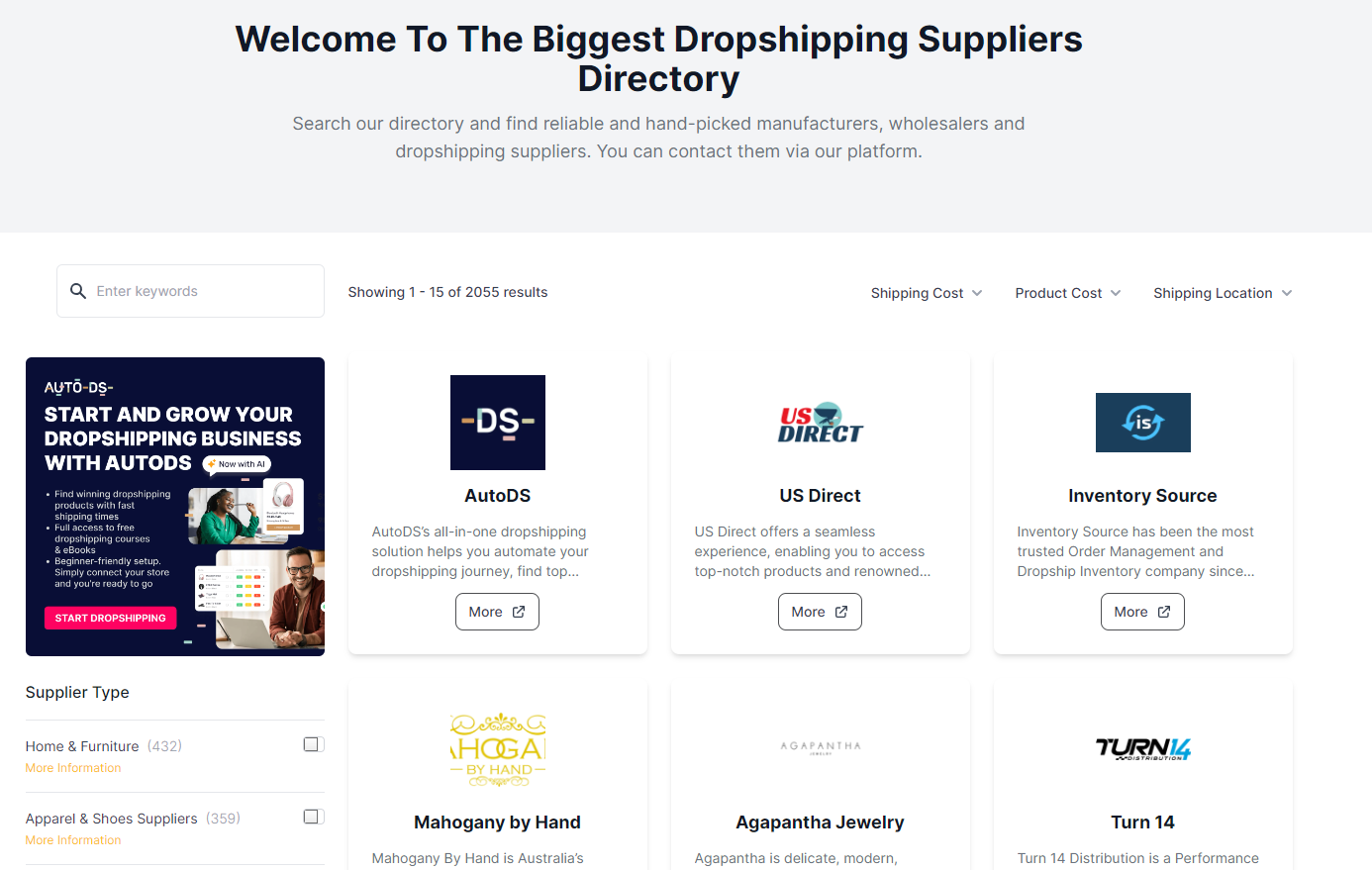
Plus, I get helpful info about each supplier’s prices, how long it takes to process orders, the least amount I can order, where their warehouse is, what they sell, and more details.
Now that you have a better understanding of the dropshipping supply chain, let’s move on to the next topic – how the dropshipping fulfillment process works.
2. Location
The location of your customers is another thing you need to consider to improve the effectiveness of your dropshipping order fulfillment process.
Aside from the location of your customers, the location of your suppliers is another significant factor in meeting your customers’ expectations around delivery speeds and costs.
Nowadays, both fast and affordable shipping options are important to customers.
So, optimizing your fulfillment process, depending on where your customers and suppliers are located, can help you reach more customers in the most cost-efficient manner.
For example, if you have a large international customer base and your customers are spread across multiple countries, then it is advisable to work with a supplier with multiple warehouse locations around the globe.
But if you only have local customers who are centrally located in one region, you may want to opt for a domestic supplier.
BONUS: Find the top 10 e-commerce fulfillment companies for your store.
3. Automation
Want to save time and money while selling more? Then, dropshipping order fulfillment automation is a must for you.
This enables you to eliminate manual and repetitive tasks from your order fulfillment process and focus on other important things.
Thanks to effective integration from your order entry system to order fulfillment, you can have orders sent automatically to your suppliers. Sure, this can save you time and money as well as reduce human error.
For example, AutoDS is an online tool for dropshipping fulfillment platform that helps you keep track of supplier orders, handle communications, and deal with cancellations and returns from your dropshipping shops.
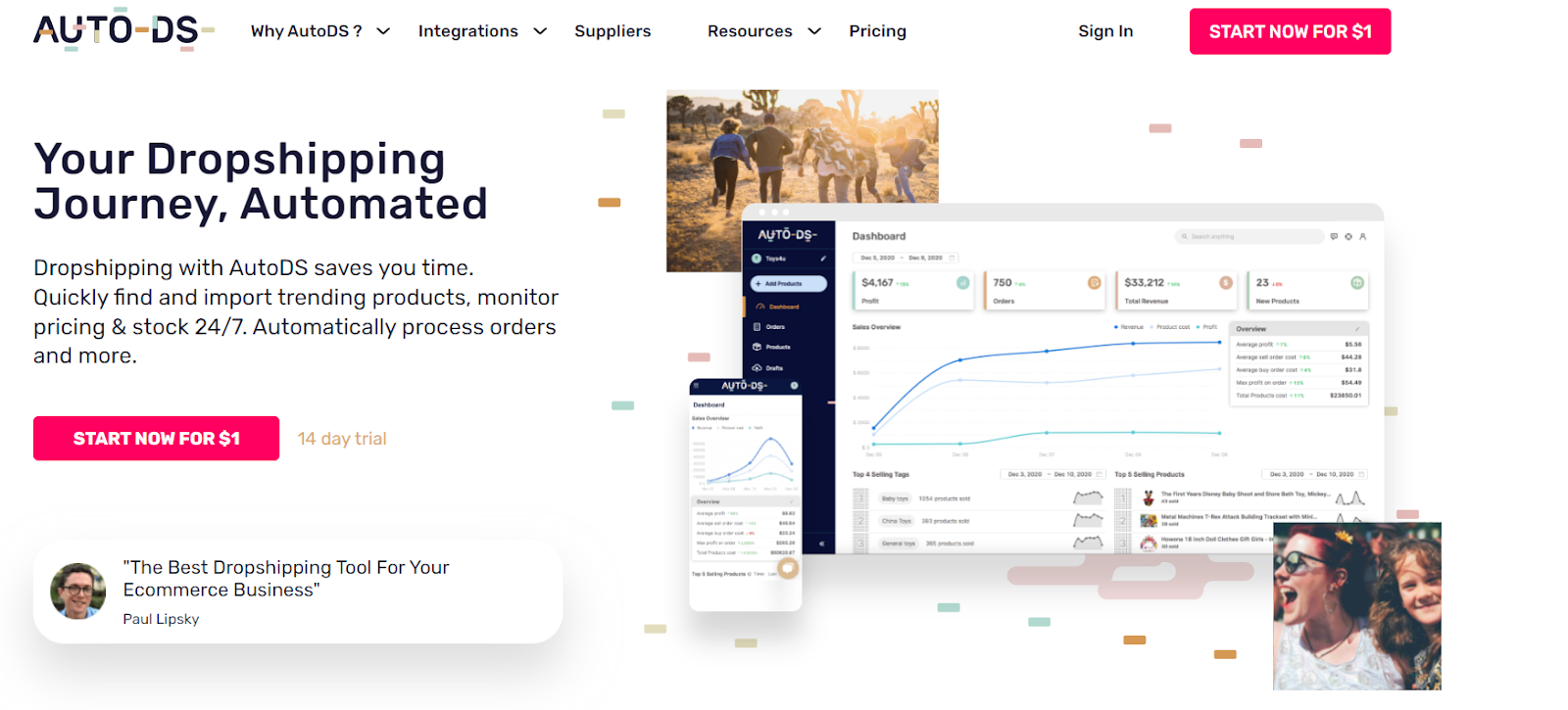
It comes with a standard message template for quick replies and a dashboard to help you monitor how well you’re doing.
With this program, you can keep an eye on price changes by the hour and get up-to-date info on products.
Moreover, the AutoDS dashboard lets you handle multiple businesses if you’ve got more than one.
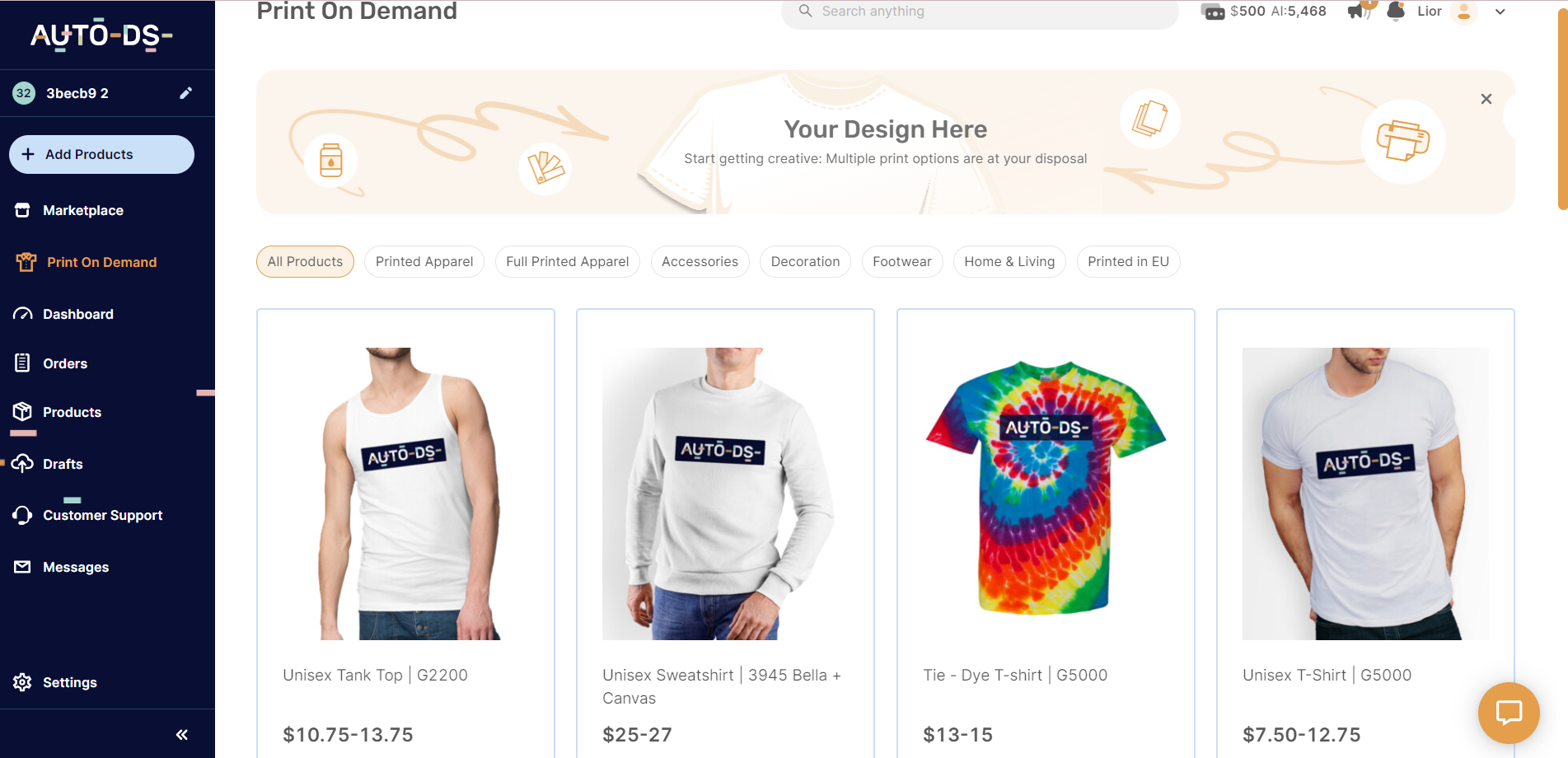
You can also get your own affiliate links, check which items are active or not being tracked, and see how many orders were made on the last day.
And, fortunately, the majority of the e-commerce platforms let you automatically fulfill orders with your suppliers once a customer has placed an order with you.
This way, you only need to click one button and the order will be sent to your supplier automatically. You do not have to manually type out all the details for the supplier.
4. Returns
The dropshipping order fulfillment process does not end when your customer receives their order. It actually ends when they are happy with their order.
As the old saying goes, “A dissatisfied customer tells more people about their negative experience than a satisfied customer does.” So, if your customer is unhappy with their order, you should offer them a refund or replacement.
To do so, you must have a clear “Return & Refund Policy” in place and work with a supplier that offers flexible return options.
For example, Gymshark excels in its return policy. Thus, the company has a strict and well-defined return policy, or I can say, they have a whole category about their dropshipping returns.
Also, what got my attention is that they are effectively highlighting its region-specific return guidelines. 👇
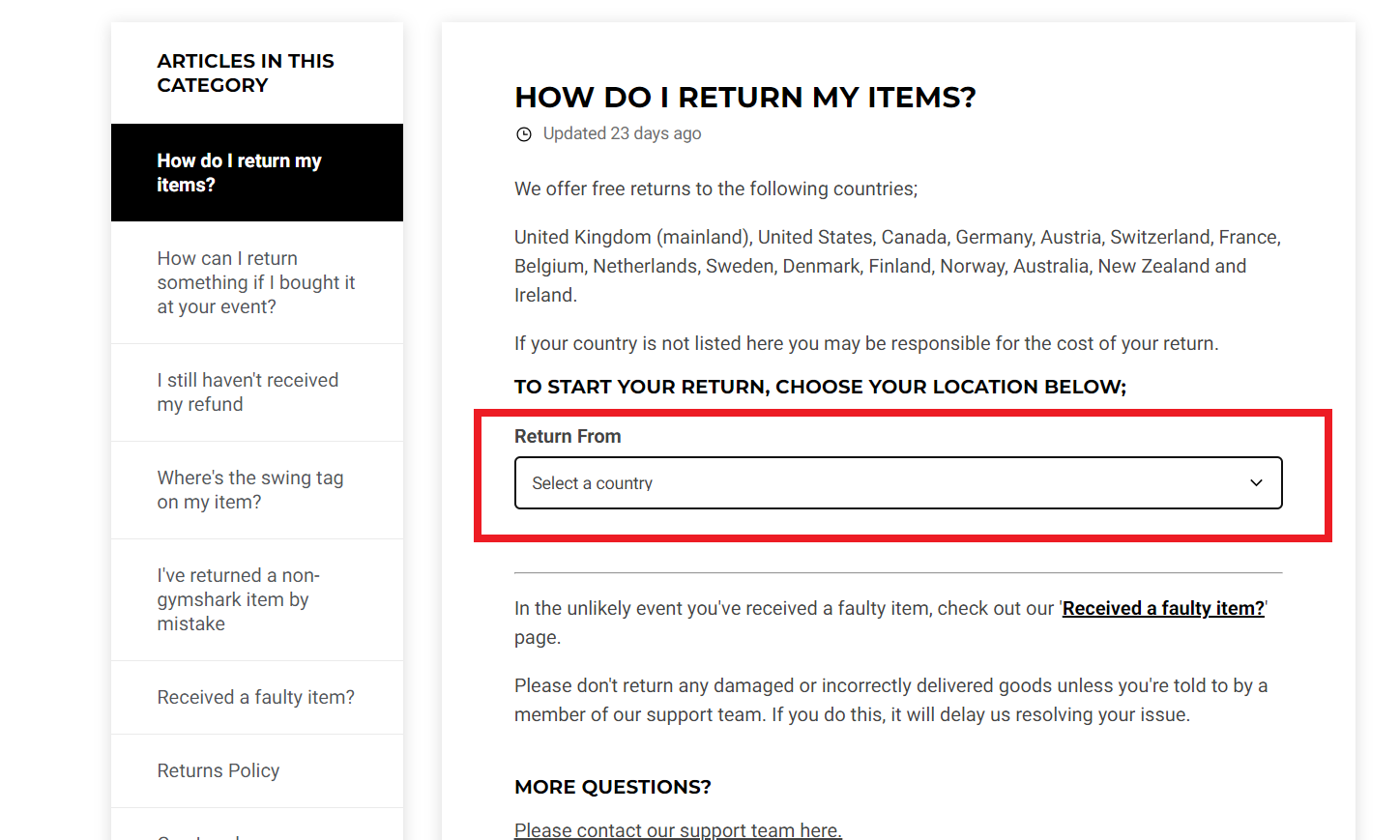
👉 Learn more about Customer Service for Dropshipping Stores.
Top 5 Dropshipping Fulfillment Platforms
Next, I will list and explain in brief the top dropshipping fulfillment platforms
ShipBob
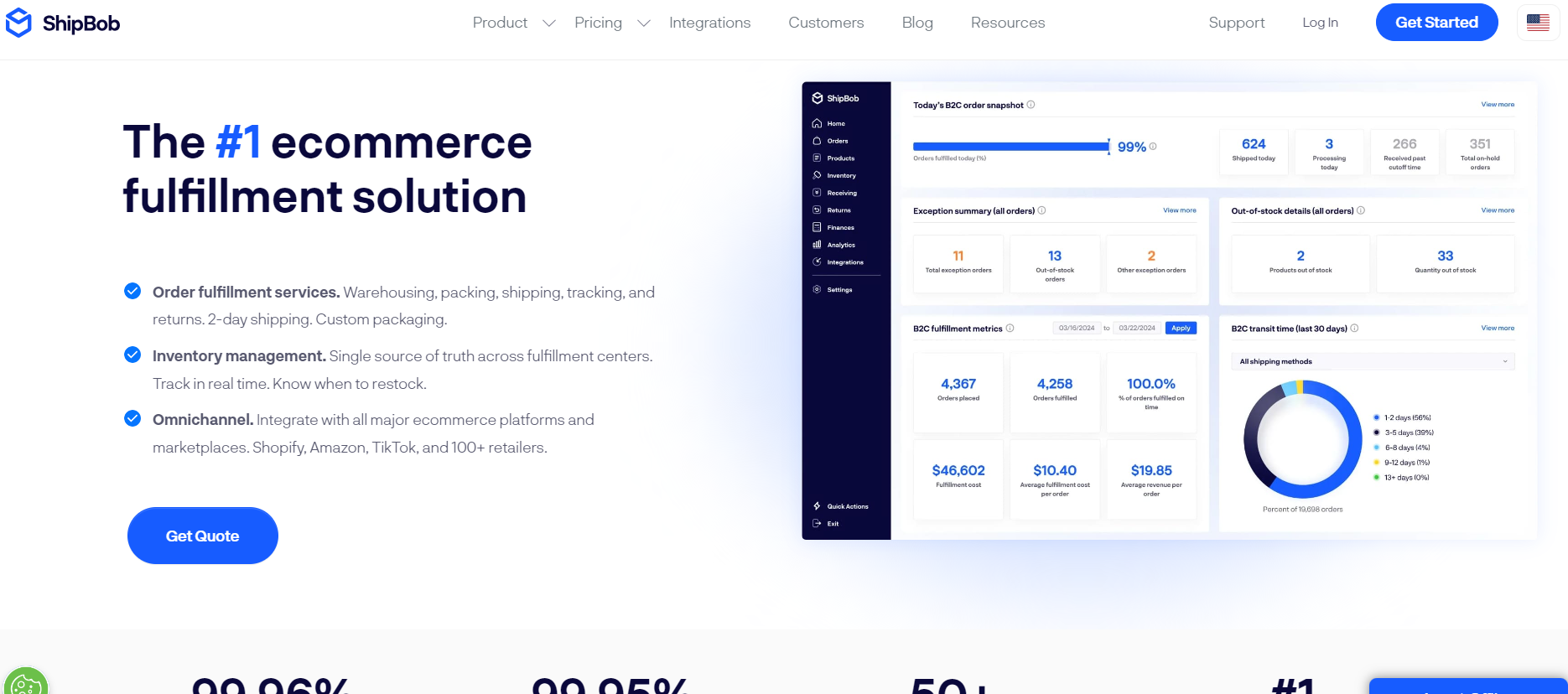
ShipBob is an incredibly user-friendly service for Ecommerce fulfillment, perfect for beginners. Hence, it comes with a handy app for Shopify users and offers alternatives for other dropshipping platforms as well.
This company is trusted by thousands of brands worldwide for managing all aspects of order fulfillment. It’s especially useful if you’re looking to ship orders from the US, Canada, the UK, the EU, or Australia.
Key Services Offered by ShipBob:
- Managing your inventory fully
- Detailed analytics and reports
- Fulfilling orders in batches
- Handling your account
- Managing returns
- Fulfilling orders across multiple channels
- Providing branded dropshipping services
- Guaranteeing 2-Day Shipping
- Warehouse Management System (WMS)
- Offering customization options
- Handling outsourced fulfillment
- Helping with global expansion
- Scaling your brand globally
- Integrating with apps and APIs for a comprehensive tech stack
- FreightBob for logistics
ShipBob Pricing Details:
ShipBob does not have set rates. Prices are given upon request for a quote, allowing you to use their precise calculator if you provide product details.
👉 Check out my in-depth ShipBob Review.
Shopify Fulfillment Network
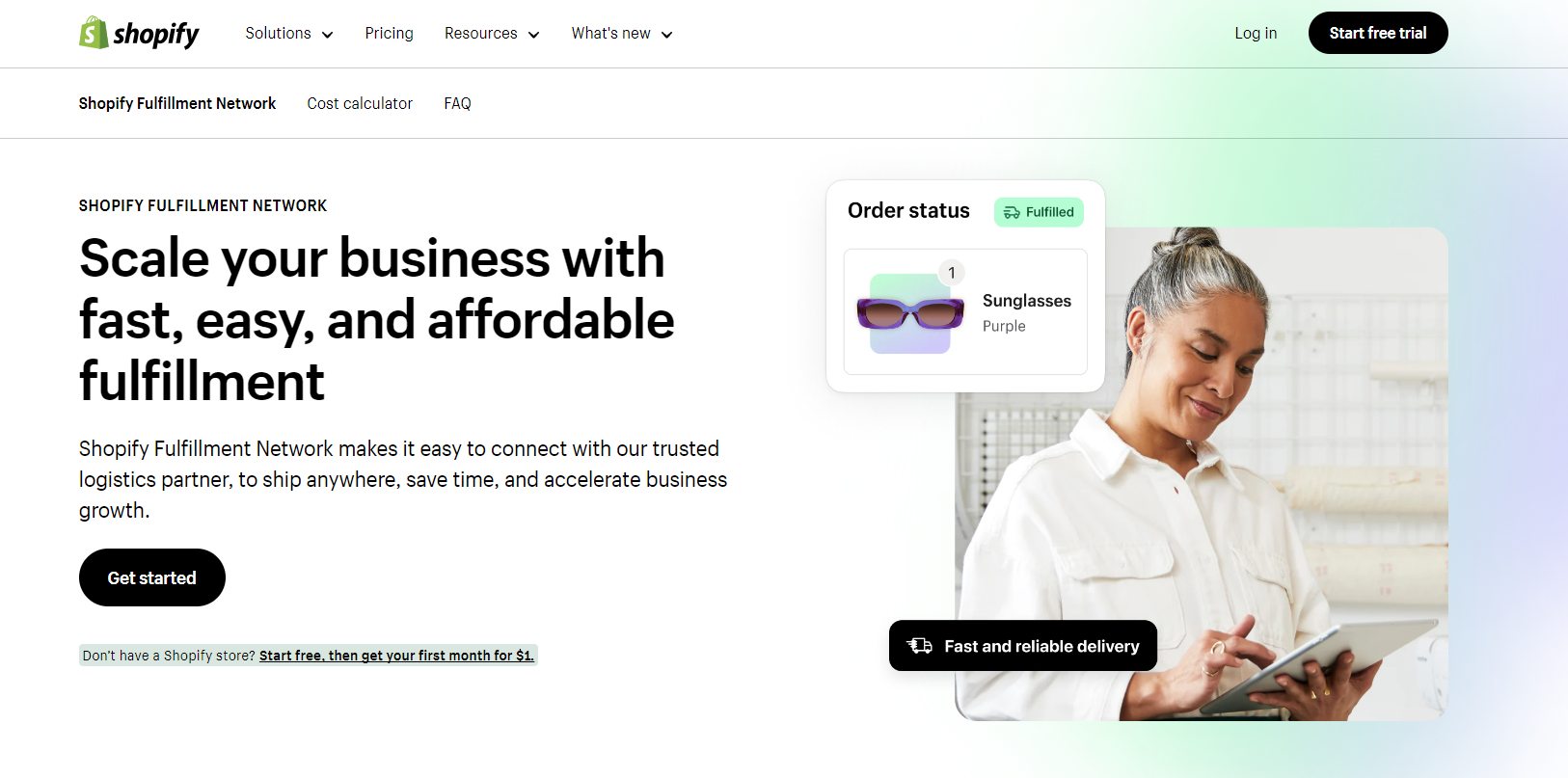
Shopify, a leading Ecommerce platform, also provides its own fulfillment services. It stands out, especially if your store is on Shopify, exempting you from storage fees for the first six months.
So, by leveraging the Shopify Fulfillment Network, you can enhance your brand’s quality and ensure customer satisfaction.
Main Services by Shopify Fulfillment Network:
- Quick two-day delivery
- Efficient order packing
- Smooth returns management
- Branding options
- Inventory control
- Automated order fulfillment
- Insightful analytics
Pricing for Shopify Fulfillment Network:
There are no initial fees or overhead costs with Shopify’s Fulfillment Network. You only pay a service fee after selling and shipping a product.
Amazon Fulfillment Services (AFS)
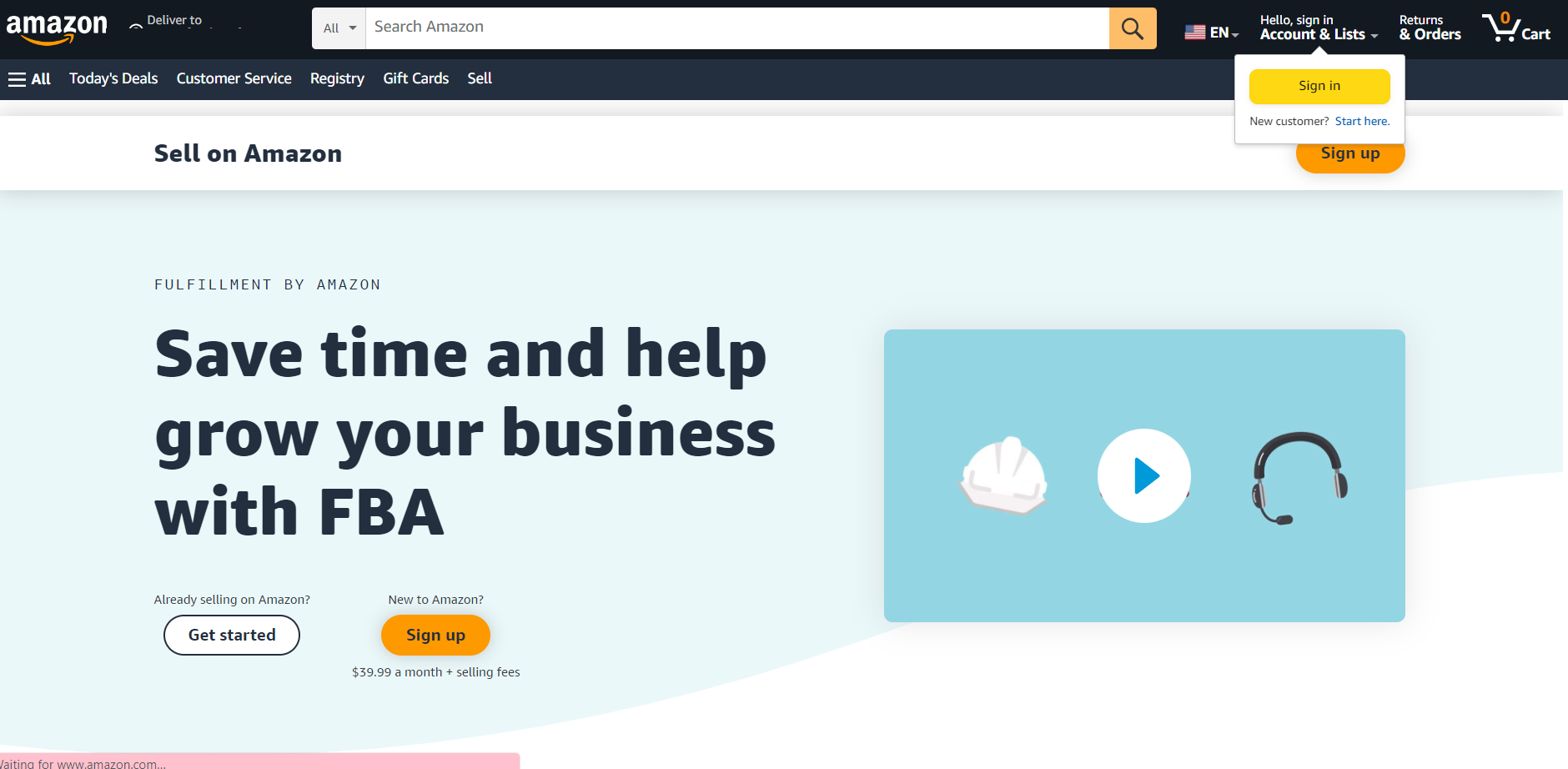
Amazon’s Fulfillment by Amazon (FBA) offers a top-tier fulfillment experience with around-the-clock customer support, efficient inventory management, comprehensive analytics, swift returns handling, and more.
Services Offered by Fulfillment by Amazon:
- Fulfilling orders across multiple channels
- Exceptional customer support
- Unlimited storage space
- Useful app integrations
- Easy setup
- Discounted shipping rates
- Efficient returns management
- Amazon Prime 2-day shipping
Fulfillment by Amazon Pricing:
Costs are calculated based on your product’s specifics, with details on their website. Amazon provides two plans:
- Individual plan at $0.99 per item sold
- Professional plan at $39.99 per month
ShipMonk
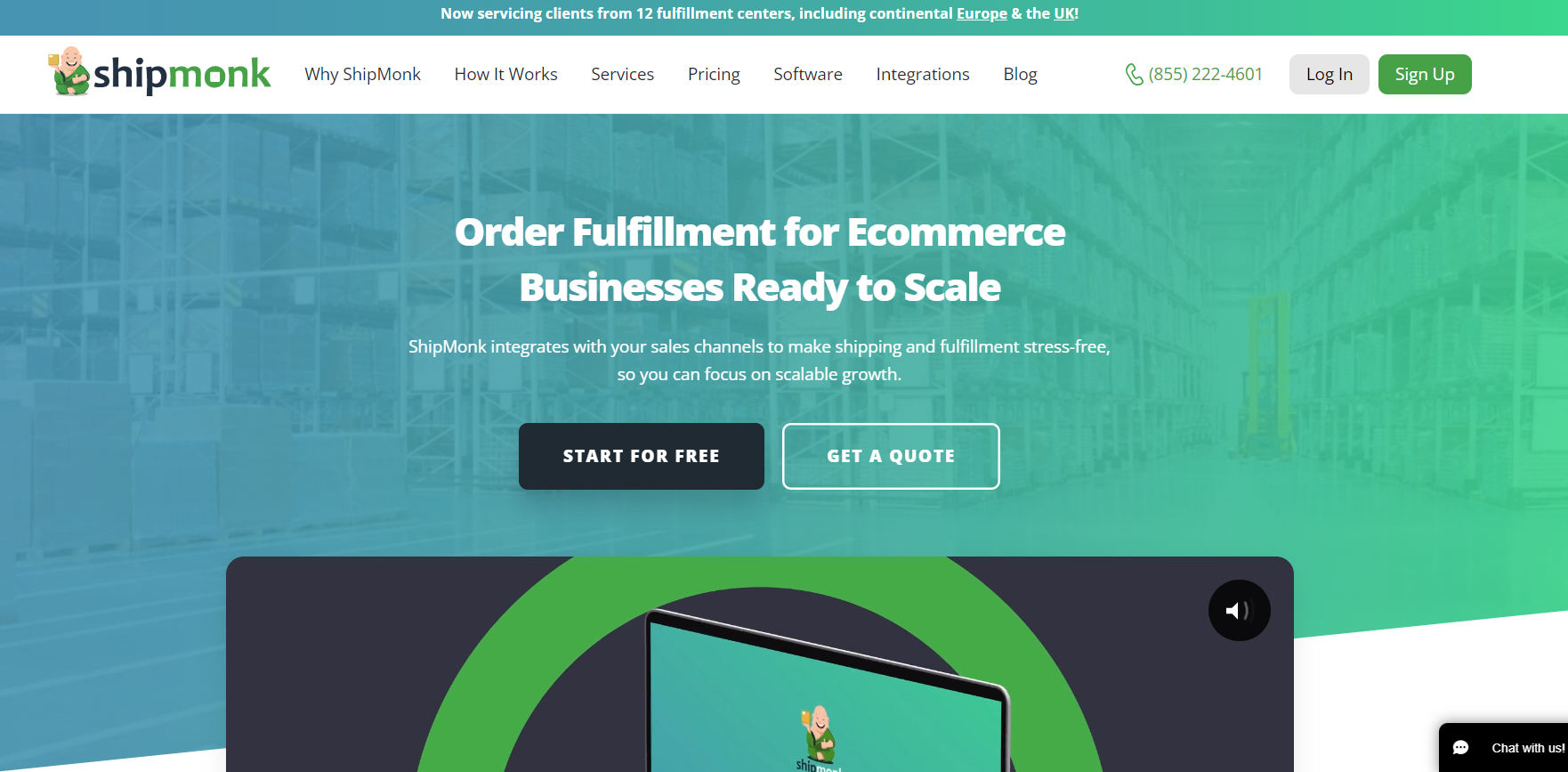
ShipMonk is an excellent option for those needing fulfillment services with warehouses in both Europe and the US. It supports nearly every major Ecommerce platform, offering cutting-edge technology and reliable software for all business sizes.
ShipMonk is here to solve any fulfillment challenges, no matter your business type or size.
Main Services by ShipMonk:
- Order analytics and reporting
- Flexible service options
- Automated order fulfillment
- Inventory management
- Superior customer service
- Branding options
- Reliable order tracking
- Subscription box fulfillment
ShipMonk Pricing:
Pricing is quote-based, or you can estimate fees with their pricing calculator, considering various factors like order volume, picking fees, etc.
Zendrop
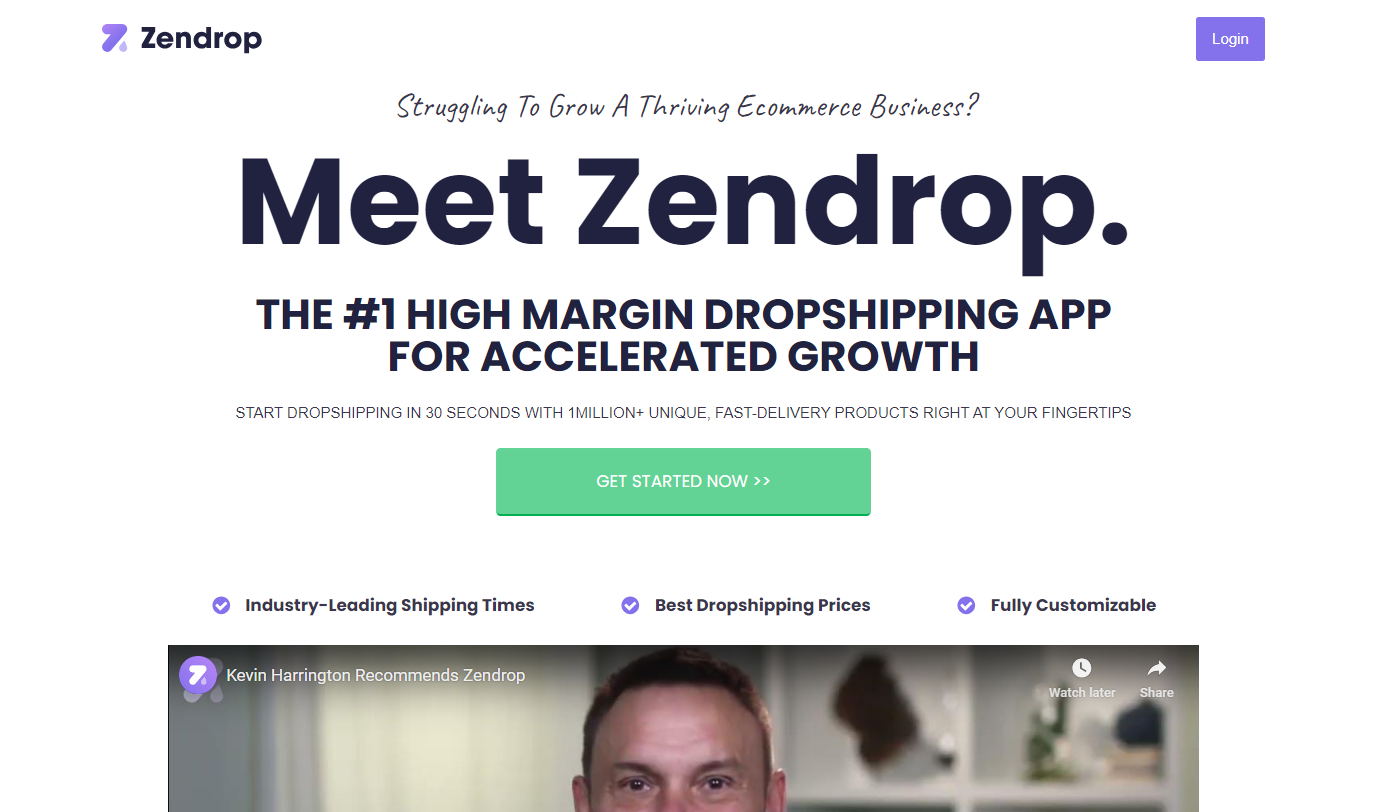
Zendrop connects reliable suppliers with online retailers and dropshippers, offering a vast inventory across numerous categories.
Thus, the platform allows for customized packaging and supports efficient product sourcing, order management, and business automation.
Shipping options with Zendrop vary by destination and include:
- Economy Shipping at $1.50 within the US and $3 elsewhere
- Regular Shipping at $2 within the US and $3.50 internationally
- Express Shipping costs $6 for items under 450g, with heavier packages at $9
Zendrop’s Advanced Features
- Dropshipping automation
- Inventory control
- Product Sourcing
- Exceptional support
- Quick shipping options
- Custom branding and private labeling
- Real-time analytics
- Exclusive products for the US market
- Support for high-volume sellers and subscription boxes
Zendrop Pricing Plans
- Free option
- Pro Plan at $49/month
- Plus Plan at $79/month
Both paid plans include a 7-day free trial for testing their services.
👉 Read my Zendrop Review: Zendrop Shopify Pricing, Features, Pros & Cons, Shipping Times.
Real-Life Examples Of Dropshipping Stores & Their Dropshipping Fulfillment Systems
Let’s consider the case of Gymshark, a fitness apparel and accessories brand that began its journey in 2012.
While Gymshark has evolved beyond traditional dropshipping models to become a globally recognized brand with its own inventory, its early growth was significantly aided by dropshipping principles, especially in managing inventory and fulfillment processes effectively.
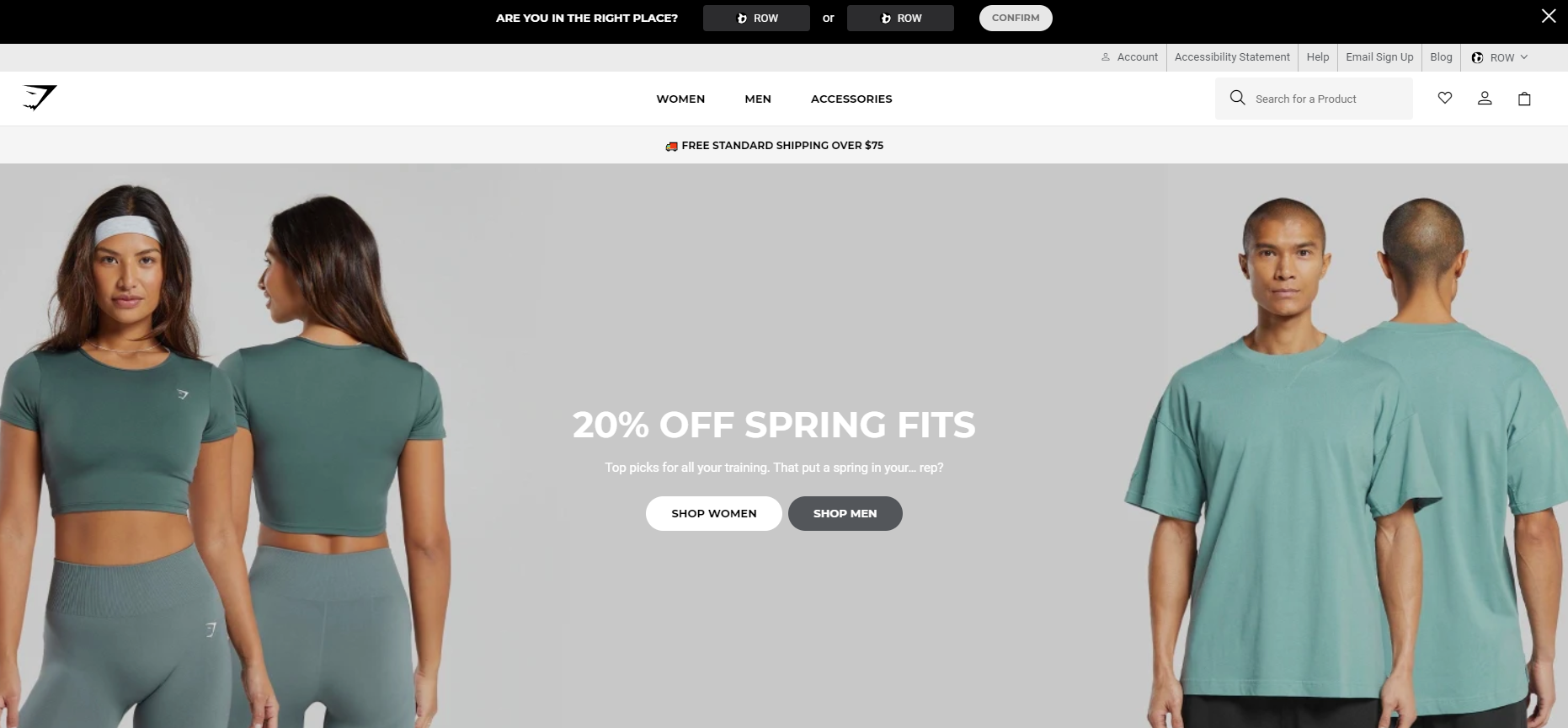
This example illustrates how leveraging dropshipping strategies and automation can lay the groundwork for scaling up an eCommerce business successfully.
Gymshark’s Early Use of Dropshipping and Automation
Challenge
As a startup, Gymshark needed to minimize overhead costs while offering a wide range of products. Thus, managing inventory and fulfillment for a global customer base presented a significant challenge.
Solution
Gymshark initially leveraged a form of dropshipping by producing products on-demand and working closely with suppliers to fulfill orders directly to customers.
So, this approach allowed Gymshark to test new designs and products without the risk of holding unsold inventory.
Automation and Systems
While specific tools and platforms Gymshark used in its early days are not publicly detailed, companies in similar stages often utilize eCommerce platforms like Shopify, integrated with dropshipping and inventory management tools such as Oberlo or Printful for on-demand apparel.
These tools can automate order processing and fulfillment, directly connecting online orders with supplier systems.
Key Aspects of Gymshark’s Success
- Brand Building: Gymshark focused on building a strong brand and community around fitness. While not a dropshipping strategy per se, the emphasis on branding is crucial for dropshipping businesses to differentiate themselves from competitors.
- Product Quality and Innovation: By closely collaborating with manufacturers, Gymshark ensured high product quality and innovation. This direct relationship with manufacturers, a key principle in successful dropshipping, enabled Gymshark to quickly adapt and respond to customer preferences and trends.
- Customer Experience: Even in its early stages, Gymshark prioritized customer experience, ensuring fast and reliable order fulfillment. Using automation for order processing and fulfillment can help maintain customer satisfaction, a critical component of dropshipping success.
As Gymshark grew, it transitioned from its initial dropshipping-like model to holding its own inventory and expanding its fulfillment capabilities.
This evolution was made possible by the brand’s early focus on automation, efficient fulfillment processes, and strong supplier relationships.
Gymshark’s journey from a small startup leveraging dropshipping principles to a leading global brand demonstrates the potential for dropshipping businesses to scale up.
By focusing on automation, brand building, product quality, and customer experience, companies can use dropshipping as a stepping stone to larger business success.
Other Dropshipping Fulfillment Examples
MVMT Watches

Founded in 2013, MVMT Watches started with a simple idea: to provide high-quality, minimalist watches at affordable prices by selling directly to consumers. Initially, they utilized a form of dropshipping to minimize overhead and inventory risks.
This model allowed them to scale rapidly by leveraging social media marketing and focusing on branding. MVMT Watches eventually grew into a global brand, and in 2018, it was acquired by Movado Group for $100 million.
Also, the creators of MVMT are upfront about getting their inventory from suppliers in China through Alibaba. While they might highlight that their watches use Japanese quartz (which is partly true), what you’re getting is a mass-produced item from China.
ColourPop
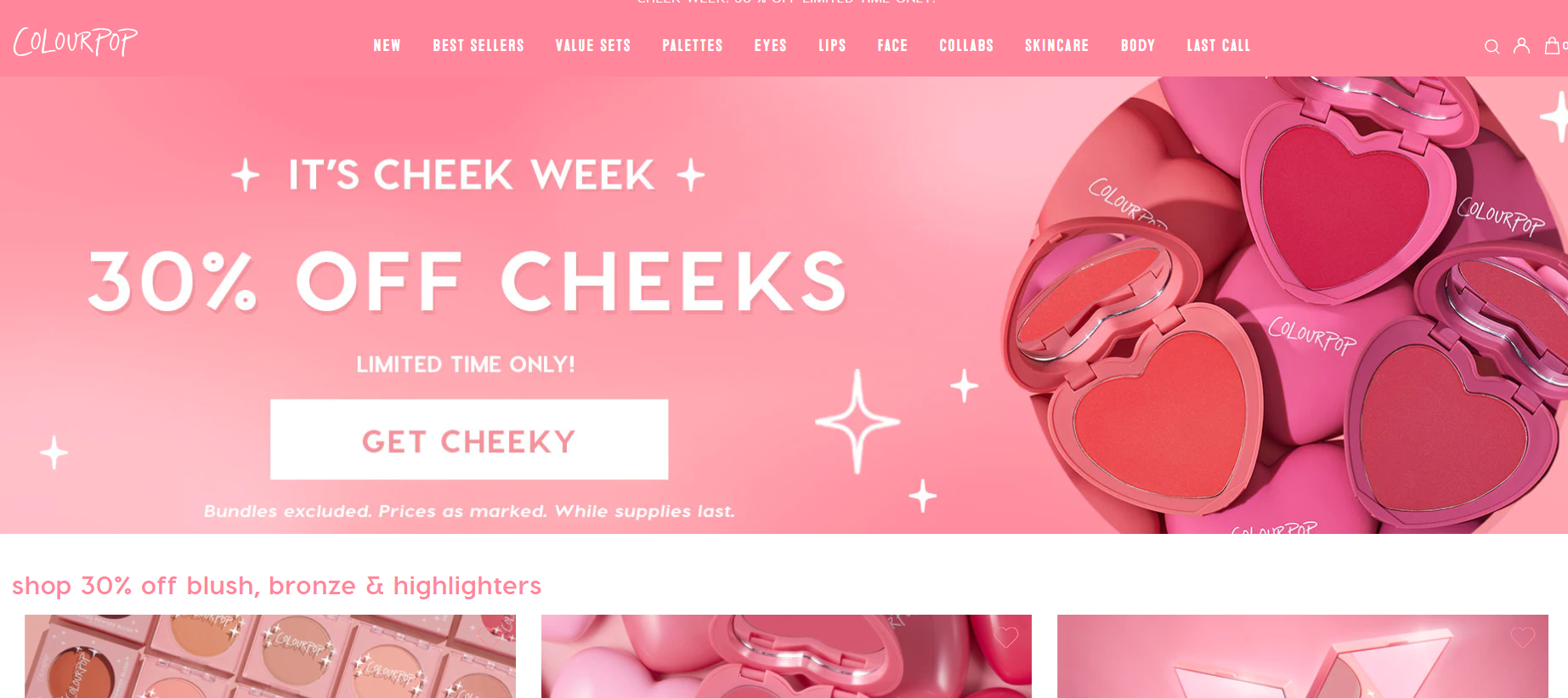
Launched in 2014, ColourPop is a cosmetics brand that quickly rose to fame through its use of social media influencers and its ability to bring new products to market rapidly.
While not a traditional dropshipper, ColourPop’s business model minimized inventory risks through an on-demand production approach, similar to the dropshipping principle.
This allowed ColourPop to test market trends with minimal risk and scale its production based on real-time demand.
Warby Parker
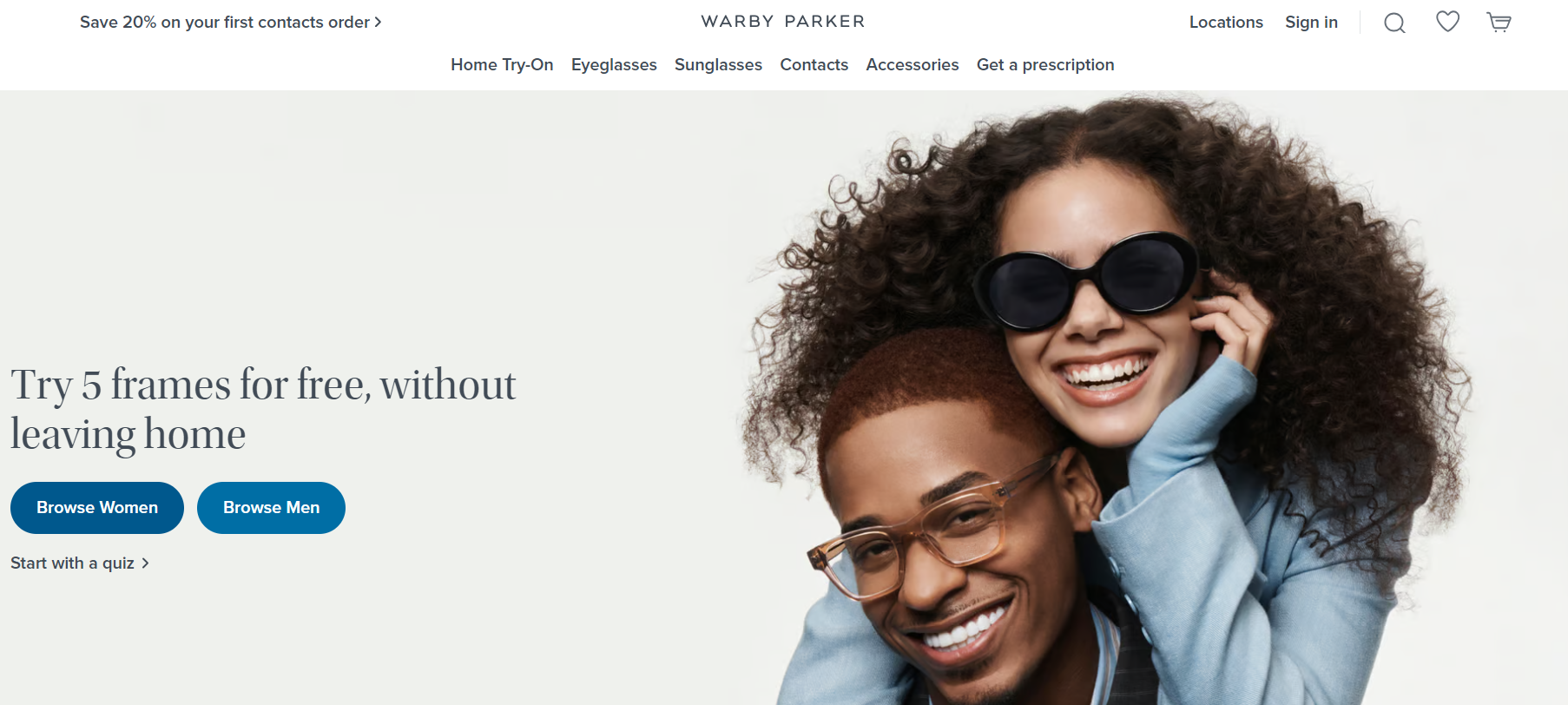
Although not a dropshipper in the traditional sense, Warby Parker’s innovative approach to selling eyewear online closely aligns with the principles of minimizing inventory and overhead costs.
Founded in 2010, Warby Parker disrupted the eyewear industry by offering a home try-on program and selling directly to consumers at lower prices.
Thus, their efficient supply chain and focus on customer experience allowed them to scale quickly and become a major player in the eyewear industry.
Warby Parker uses a mix of online shopping, brick-and-mortar stores, and a home try-on program for distributing its eyewear. Also, customers can shop and buy glasses on their website.
They also have actual stores where people can try on glasses and get help. Moreover, with the home try-on program, customers can pick frames online and have them sent to their homes to try out.
Warby Parker also uses social media and word-of-mouth to spread the word about their brand.
MeUndies
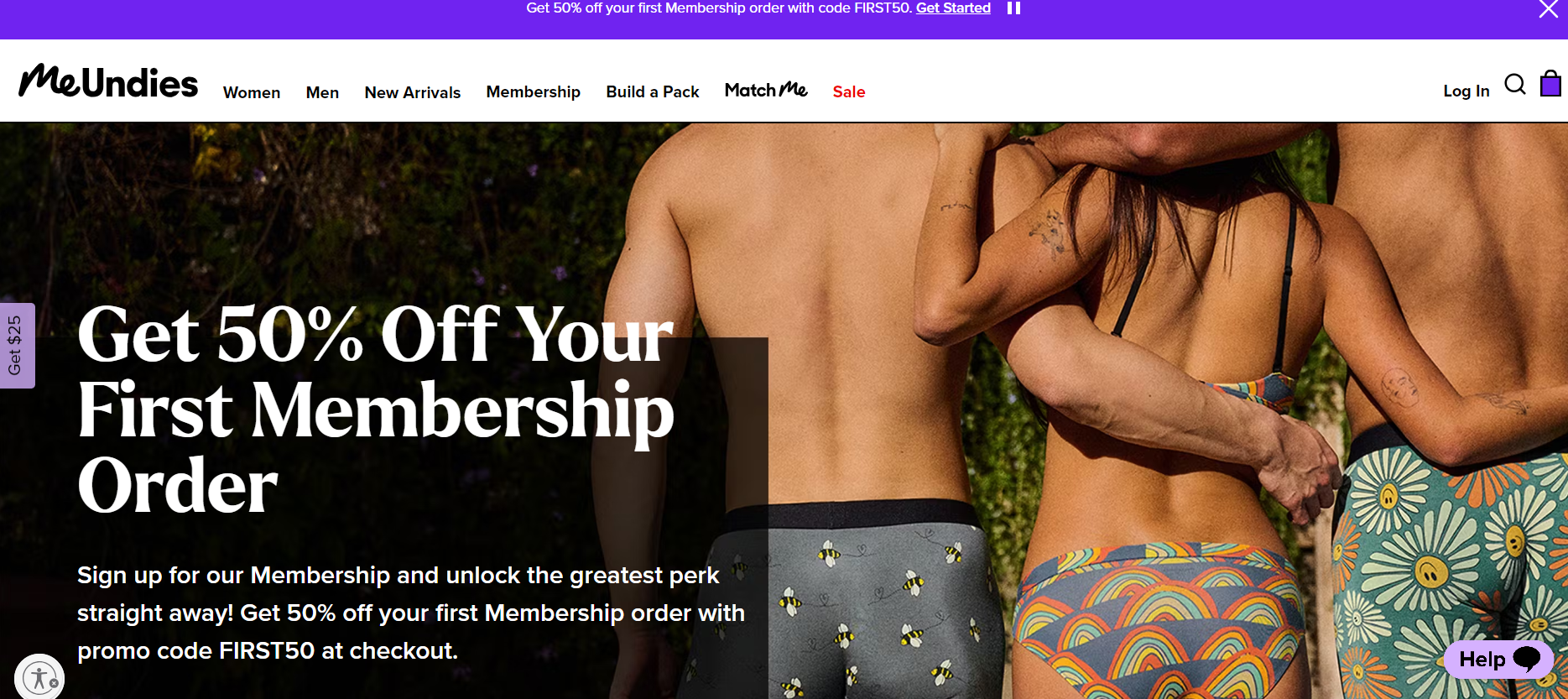
MeUndies is a Los Angeles-based underwear and loungewear company founded in 2011. They started with a direct-to-consumer model, leveraging social media and subscription services to grow.
By focusing on quality products, strong branding, and an excellent customer experience, MeUndies utilized aspects of the dropshipping model by minimizing upfront inventory investments and focusing on just-in-time production strategies to scale their business.
Dropshipping Fulfillment FAQs
1. How do dropshippers handle returns and exchanges, especially when the supplier is involved in the fulfillment process?
Handling returns and exchanges in dropshipping requires a clear, customer-friendly policy due to the involvement of suppliers who fulfill the orders.
Also, dropshippers often coordinate closely with their suppliers to manage returns and exchanges.
Thus, they need to ensure that their suppliers agree to their return policies, which should include details about who is responsible for the cost of shipping for returns and any restocking fees.
Effective communication with suppliers is crucial to facilitate a smooth process for returns and exchanges, making it important for dropshippers to select suppliers who offer supportive and reliable return policies.
2. What are the specific challenges dropshippers face with international shipping?
Dropshippers face several challenges with international shipping, such as navigating customs, and taxes, and dealing with potentially longer delivery times.
These issues can lead to increased costs and customer dissatisfaction if not managed properly.
To address these challenges, dropshippers can:
- Use multiple suppliers located in different regions to minimize shipping distances and reduce delivery times.
- Be transparent with customers about potential delays and costs associated with customs and taxes.
- Consider including customs fees and taxes in the product price or at checkout to avoid surprise costs for customers.
- Offer detailed tracking information to customers to help manage expectations regarding delivery times.
3. How can dropshippers effectively communicate with and manage relationships with multiple suppliers, especially when aiming to offer a wide range of products?
Effective communication and management of relationships with multiple suppliers are essential for dropshippers, especially when aiming to offer a wide range of products.
To achieve this, dropshippers can:
- Establish clear communication channels and regular check-ins with suppliers to discuss performance, address issues, and explore opportunities for improvement.
- Use technology to their advantage by employing dropshipping software or platforms that facilitate order management, inventory tracking, and communication with suppliers.
- Develop strong relationships with suppliers by being reliable partners, negotiating fair terms, and understanding their capabilities and limitations.
- Diversify their supplier base to reduce the risk of stockouts and dependency on a single supplier, while also being cautious not to spread themselves too thin.


Dropshipping Fulfillment – Complete Guide
E-commerce has quickly developed in the past few years, requiring dropshipping businesses to improve their dropshipping order fulfillment process. Plus, customers are becoming more and more demanding.
Therefore, an effective order fulfillment process is an essential part of any successful dropshipping business. And after a customer clicks the “buy” button, you need to make the experience as seamless as possible.













![The Top 21 3PL Companies Compared [2024 List & Guide]](https://images.weserv.nl/?url=https://prod-dropshipping-s3.s3.fr-par.scw.cloud/2024/03/Frame-3922469.jpg&w=420&q=90&output=webp)